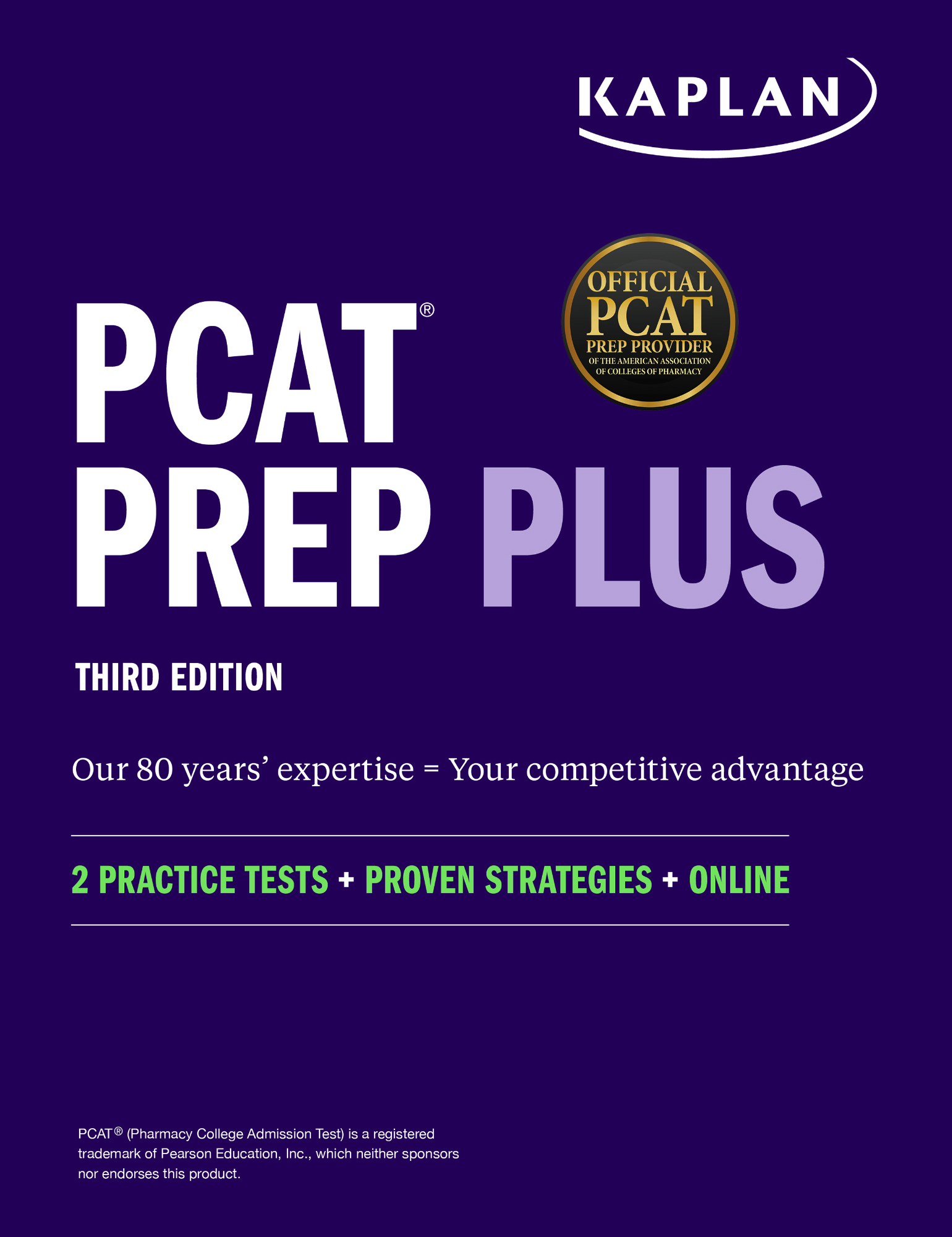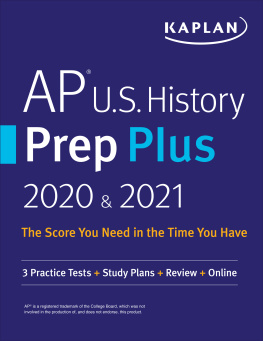
Acknowledgments
Editor-in-Chief, Third Edition:
Nimesh Shah
Prior Edition Editorial Staff:
Elizabeth Flagge, Chris Durland, Tim Eich
Special thanks to the staff of Kaplan Test Prep who worked on this book.
PCAT is a registered trademark of Pearson Education, Inc., which neither sponsors nor endorses this product.
This publication is designed to provide accurate information in regard to the subject matter covered as of its publication date, with the understanding that knowledge and best practice constantly evolve. The publisher is not engaged in rendering medical, legal, accounting, or other professional service. If medical or legal advice or other expert assistance is required, the services of a competent professional should be sought. This publication is not intended for use in clinical practice or the delivery of medical care. To the fullest extent of the law, neither the Publisher nor the Editors assume any liability for any injury and/or damage to persons or property arising out of or related to any use of the material contained in this book.
2021 by Kaplan, Inc.
Published by Kaplan Publishing, a division of Kaplan, Inc.
1515 W. Cypress Creek Road
Fort Lauderdale, FL 33309
All rights reserved under International and Pan-American Copyright Conventions. By payment of the required fees, you have been granted the non-exclusive, non-transferable right to access and read the text of this eBook on screen. No part of this text may be reproduced, transmitted, downloaded, decompiled, reverse engineered, or stored in or introduced into any information storage and retrieval system, in any form or by any means, whether electronic or mechanical, now known or hereinafter invented, without the express written permission of the publisher.
ISBN: 978-1-5062-7677-9
Whats Included in My PCAT Study Plan?
The Online Portal
You can access your online content by registering at kaptest.com/moreonline and following the onscreen instructions. Youll need this book to complete the registration.
Please note that access to the online portal is limited to the original owner of this book.
Time-Tested Strategies for Every Section
Kaplan has spent years researching the PCAT and teaching thousands of students the effective methods they need to succeed. This book contains detailed instructions on how to analyze and correctly answer questions within the five sections you will encounter on the PCAT: Writing, Biological Processes, Chemical Processes, Critical Reading, and Quantitative Reasoning.
Two Full-Length PCAT Exams
Two computer-based practice tests can be found in your Online Portal. These full-length, timed practice tests come complete with detailed answer explanations. After you complete each test, well analyze your strengths and weaknesses in various content areas and give you immediate feedback on your performance, so you know where to better focus your studies.
Test Updates
The material in this book is up-to-date at the time of publication. However, the test makers may release information on test changes after this book is published. Be sure to carefully read the materials you receive when you register for the test. If there are any important late-breaking developmentsor any changes or corrections to the Kaplan test preparation materials in this bookwe will post that information online at kaptest.com/retail-book-corrections-and-updates.
Feedback and Comments
Email us:
We would appreciate your comments and suggestions about this book. Please provide any feedback you have for the improvement of this book to . Your feedback is extremely helpful as we continue to develop high-quality resources to meet your needs.
Note to International Students
If you are an international student hoping to attend a pharmacy school in the United States, Kaplan can help you explore your options. Here are some things to think about:
- If English is not your first language, many pharmacy schools will require you to take the TOEFL (Test of English as a Foreign Language) or provide some other evidence that you are proficient in English.
- Plan to take the PCAT. The majority of U.S. pharmacy schools require it.
- Begin the process of applying to pharmacy schools at least 12 months before the fall of the year you plan to start your studies. Most programs only have September start dates.
- You will need to obtain an I-20 Certificate of Eligibility from the school you plan to attend if you intend to apply for an F-1 Student Visa to study in the United States.
- If youve already completed a pharmacy degree outside the United States, get information from U.S. schoolssome may have special programs for international graduates of pharmacy.
For more information, visit kaptestglobal.com.
How to Use This Book
In addition to providing you with the best practice questions and test strategies, Kaplans team of Learning Scientists are dedicated to researching and testing the best methods for getting the most out of your study time. Here are their top five tips for improving retention:
- Start each study session with a round of practice questions.
Practice questions provide focus for each study session by showing you what you still need to learn and by helping you draw connections between what you already know and what you will be studying. Students who test ahead of time score higher on the PCAT after studying than students who dont pre-test. Take time to read the explanations to your practice questions carefully. Building familiarity with the structure of the questions and answers will help you feel more comfortable with the test itself.
- Review multiple topics in one study session.
This may seem counterintuitivewere used to practicing one skill at a time in order to improve each skill. However, research shows that weaving topics together leads to increased learning. Not only that, testmakers often include more than one topic in a single question. Studying in an integrated manner is the most effective way to prepare for the PCAT.
- Customize the content.
Drawing attention to difficult or critical content can ensure you dont overlook it as you read and re-read sections. The best way to do this is to make it more visualhighlight, make tabs, use stickies, whatever works. We recommend highlighting only the most important or difficult topics. Selective highlighting is great for emphasizing parts of the text, but over-highlighting can have the opposite effect.
- Repeat topics over time.
Many people try to memorize concepts by repeating them over and over again in succession. Our research shows that retention is improved by spacing out the repeats over time and mixing up the order in which you study content. For example, try reading the chapters in a different order the second (or third!) time around. Revisit practice questions that you answered incorrectly in a new sequence. Sometimes information you reviewed more recently can help you better understand those questions and solutions.
- Take a moment to reflect.
When you finish reading a chapter or section for the first time, stop and think about what you read. Jot down a few thoughts about why the content is important or what topics came to mind when you read it. Associating learning with a memory is a fantastic way to retain information! This also works when answering questions. After answering a question, take a moment to think through each step you took to arrive at a solution. What lead you to the answer you chose? Understanding the steps you took will help you make good decisions when answering future questions.
Next page










